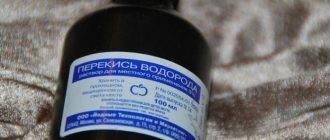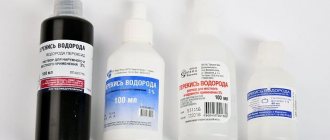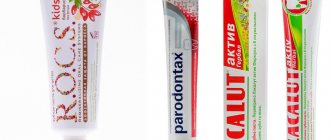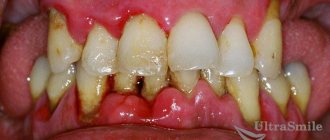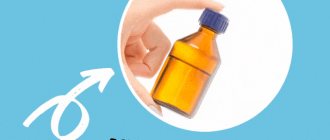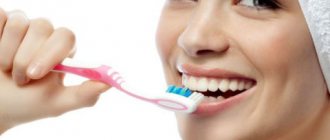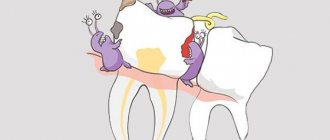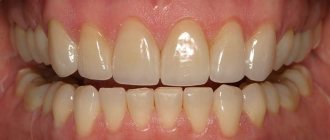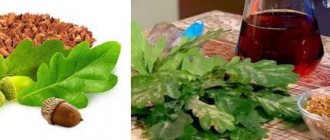Periodontitis: treatment at home with hydrogen peroxide and soda
Treatment of periodontal disease at home can also be effective if it is chosen correctly and folk recipes are used together with drug therapy. Additional measures have a pronounced positive effect, speed up recovery and can be used as preventive measures in the future. From this review you will learn how to rinse with hydrogen peroxide for periodontal disease, use the product in its pure form or with soda or lemon juice. Please note that peroxide should be used several times a day until the symptoms of periodontal disease completely go away.
The benefits of hydrogen peroxide for periodontal disease
Most often, periodontal disease is a consequence of a disease of internal organs, often developing against the background of various pathologies. Heredity and diseases such as atherosclerosis, diabetes mellitus, gastrointestinal problems, lack of vitamins and more play a certain role in this.
Hydrogen peroxide for periodontal disease is one of the popular therapeutic agents. We remind you that you should not self-medicate. There is no need to place high hopes on such therapy - it is effective in the initial stages as a concomitant remedy or as a preventive measure. If not treated properly, the disease inevitably leads to tooth loss.
Treatment of bleeding gums with hydrogen peroxide is equally used both in folk medicine and in specialized clinics. This therapy does not require large financial expenditures and helps to achieve excellent results.
Hydrogen peroxide, entering the oral cavity, causes an oxidation process. This promotes the penetration of oxygen into tooth enamel, thereby whitening and restoring it. Peroxide is an effective disinfectant and hemostatic agent that prevents the formation of wounds and ulcers in the oral cavity. Through internal and external use, it is possible to normalize metabolism and strengthen the skeletal system and soft tissues.
Hydrogen peroxide and soda for the treatment of periodontal disease at home
Hydrogen peroxide has pronounced anti-inflammatory properties, improves blood supply processes in tissues, and supplies cells with oxygen. It can be used internally and externally - in the form of rinses, together with toothpaste, to massage the gums. Also, a peroxide solution (a drop of 3% of the drug per 100 ml of water) is taken internally on an empty stomach three times a day. Do two courses, each for 10 days with breaks of 3 days.
A massage with 15-20 drops per 15 ml of water is done in the most advanced cases - a tampon is moistened in the solution and the gums are treated for several minutes a day. The course of treatment can be up to 30 days. It is quite convenient to add the product to toothpaste - 2-3 drops are enough to enhance the anti-periodontal effect. Use a brush with medium-hard bristles and special massage inserts.
Do not exceed the dosage when treating with peroxide and under no circumstances use the solution in its pure form.
Indications and contraindications
Hydrogen peroxide is a cheap, effective remedy for a number of diseases. It is used in therapy:
- periodontal disease;
- stomatitis;
- fungal infections of the mucous membrane and gums;
- plaque on the tongue;
- bad breath.
But keep in mind that peroxide is not a universal remedy for all diseases and it has contraindications. Rinses and compresses cannot be used for:
- advanced deep caries;
- a large number of fillings;
- advanced stages of periodontitis, accompanied by increased bleeding of the gums;
- violations of the integrity of tooth enamel.
Regular use of peroxide does a good job of brightening tooth enamel.
The substance should also not be used by children under 12 years of age. If you doubt the advisability of hydrogen peroxide therapy specifically in your case, we recommend that you first consult with your doctor.
How to treat and process correctly
Various recipes are used to remove heavy deposits with hydrogen peroxide. Let's look at the most popular ones.
Rinsing
The first is rinsing the mouth with a peroxide solution. To ensure that these procedures do not harm you, prepare the product strictly in accordance with the dosages - 100 ml of clean water and up to 30 ml of 3% peroxide. The solution should not interact with the teeth for too long, so rinse your mouth up to three times a day for no longer than 10 days. Before the procedure, make sure that you have made the solution correctly.
Cleaning gums and teeth
The second method is cleaning with peroxide. It is indicated if the plaque is very strong. A special mixture is made from equal parts of chamomile infusion, tooth powder, and hydrogen peroxide. If there is severe bleeding, brushing your teeth with peroxide is not recommended. To whiten enamel, peroxide is mixed with baking soda in equal proportions, the mixture is usually softened with eucalyptus oil (this is optional). With this paste you need to brush your teeth once - with a regular brush or cotton swab. You can also make a 3% peroxide solution in the same proportions as for rinsing, apply it to a cotton pad and massage the gums.
When using peroxide, do not forget that it affects the acid-water balance, so you should use these recipes (especially for whitening) no more than once a month.
The most gentle way is to add a small amount of peroxide to toothpaste (it is better to use therapeutic and prophylactic agents such as Parodontax or Parodontol) - 1-2 drops per serving of dental product. Rinsing and cleaning should be done after meals. Before rinsing your mouth with peroxide solution, it is recommended to brush your teeth or at least use a regular mouthwash. An internal solution of 3% at the rate of 1 drop per 50 ml is taken only on an empty stomach half an hour before meals. You can also use it after eating, but at least after 2 hours.
Don’t be overzealous with the strips - even the weakest solution, if used more than three times a day, can damage the enamel and cause general intoxication of the body. Also, in the first days of treatment, slight nausea, upset stomach, and skin rashes may occur (normally, these symptoms pass quickly and on their own). 10 days of active therapy, as we already wrote in the previous paragraph, is enough. You can repeat a similar course after 3 days.
Methods of application
The key to successful treatment of periodontal disease is careful daily oral hygiene. Brush your teeth for 5 minutes twice a day, preferably using a special paste, after which use rinses that soothe the gums and dental floss. Anti-periodontal toothpastes alone will not help you completely forget about the disease, but they will significantly speed up the healing process.
If you have increased bleeding gums and bad breath, you need to choose the right toothbrush - it should have medium-hard bristles.
The main ways to use peroxide:
- saline solution - take a teaspoon of salt for 2 tablets of dry peroxide, dissolve it all in a glass of clean warm water, mix and rinse your mouth. One rinse should take at least 5 minutes. The solution should not be swallowed. To quickly improve the condition, rinsing should be done three times a day;
Oral care for periodontal disease
Periodontal disease (treatment at home is permissible only in the first stages) requires daily and proper care with the help of additional products. First of all, you should choose a soft toothbrush and suitable toothpaste. When choosing a paste, you need to pay attention to the composition of the product; it must contain plant components.
Teeth are brushed twice a day; the procedure should not take less than 4 minutes. For additional protection, use herbal based rinses. Safe brushing of teeth is carried out with a brush up to 2.5 cm long and up to 1 cm wide. The bristles should be arranged in three rows and have a soft structure.
Before each use, wash the brush in hot water and soap. This procedure allows you to kill the microbes on it.
It is important to remember to brush your teeth properly so as not to harm your inflamed gums. To avoid pushing food into the depths of your teeth, you should brush the top row from top to bottom, and the bottom row, vice versa. The tongue and cheeks are also cleaned. These organs collect the bulk of the plaque.
The procedure should be completed by rinsing your mouth with warm water. Proper hygiene allows you to avoid the accumulation of tartar, which collects pathogenic bacteria.
To treat periodontal disease, special toothpastes are prescribed. Experts do not recommend buying the first product you come across that is advertised by manufacturers. You should only buy the product in pharmacies, paying attention to products with herbal composition.
Treatment is not carried out only with the help of pastes, since they are only an additional element of hygiene, help remove unpleasant odors, strengthen the gums and reduce bleeding.
In addition to herbs, toothpastes for the treatment of periodontal disease should include:
- Potassium tetrapyrophosphate. It helps remove tartar and plaque;
- Potassium nitrate - acts on the dental canals and reduces sensitivity;
- strontium chloride - strengthens gums, reduces bleeding and sensitivity.
Symptoms
You can suspect periodontal disease based on the following signs:
- exposure of the neck of the teeth, as a result of which the mucous membrane becomes thinner, and there are no inflammatory processes;
- putrid odor from the mouth;
- exposure of the tooth root;
- loosening of the tooth;
- increased sensitivity of the neck of the teeth to chemical and temperature stimuli;
- itching sensation in the gums;
- slight plaque;
- discomfort when chewing.
Attention! Periodontal disease is not as common a disease as periodontitis. It occurs in only 3-10% of people. Most often, the course of the pathology is chronic.
Features and causes of periodontal disease development
The nature of a person’s life greatly influences the condition of his teeth. What a person eats can change color or even destroy the enamel and affect the gums. Periodontal disease is a lesion of the periodontal tissues, which causes exposure of the necks of the teeth. Also, this condition should not be confused with periodontitis, when gum pockets form, fluid is released from it and the tooth becomes loose. These are different diseases.
Today, doctors and specialists believe that the main causes of tooth exposure may be:
- no load on the tooth and gum;
- lack of vitamins and microelements;
- weakened immunity.
Treatment of periodontal disease at home with folk remedies
Treatment of periodontal disease with hydrogen peroxide
Hydrogen peroxide is an effective remedy for combating periodontal disease. There are several ways to use it: internally, for rinsing, or as an additional substance that is added to the toothpaste before brushing your teeth.
When hydrogen peroxide enters the blood, it breaks down into oxygen and water, which has a positive effect on the body. Oxygen saturates cells and stimulates the functioning of various body systems. Water is simply released from the body.
Hydrogen peroxide
Ingestion
To prepare the medicine for oral administration, you need to take 50 ml of clean drinking water, add 1 drop of 3% hydrogen peroxide solution. Take 1 hour before meals on an empty stomach.
Attention! At the beginning of treatment, you may experience mild nausea or stomach upset, or a mild skin rash. But after 2-3 days, these symptoms will go away. If this does not happen, then stop the course of therapy.
The duration of treatment will be 10 days, and then take a break for 3 days, and repeat again. The dosage remains safe - 30 drops of hydrogen peroxide per day. Under no circumstances should you take the drug in its pure form.
Rubbing
Inflamed gums can be wiped with a 3% hydrogen peroxide solution. To do this, you need to moisten a cotton pad. This procedure will strengthen the gums and reduce their bleeding. You can also use a tandem of hydrogen peroxide and garlic for wiping. These substances are similar in their effects on the body. They improve blood circulation in the gums and neutralize the source of infection in the oral cavity. Carry out the treatment procedure 2-3 times a day.
Rinsing
To cleanse the oral cavity, and in particular the gums, from infections, the rinsing procedure will help. To prepare the solution, take 100 ml of water and dissolve 2 tablets of hydroperite in it. Rinse your mouth 3-4 times a day.
Treatment of periodontal disease with herbs
Herbal rinse
To rinse the mouth, you can use the following recipes based on medicinal herbs:
- To strengthen teeth and gums, a tincture made from 80 g of cinquefoil, 40 g of horse sorrel, 300 ml of brine (it must be strained from sauerkraut) is suitable. After combining all components, leave the solution for 24 hours. Before use, filter it and take 6 times a day.
- To eliminate bleeding gums, you can try a hot infusion made from the following herbs: burnet leaves, blackberries, sandy sedge, St. John's wort and blood-red geranium. Combine all the herbs, take 40 g and put in a thermos. Pour 1 liter of boiling water. Leave for 2 hours, filter and use for rinsing. Carry out the procedure 4-6 times during the day.
- To prepare the next decoction, take 40 g of golden mustache, chamomile, and pour 500 ml of boiling water. Leave for 2 hours, filter and add 1 tsp. salt. Use the rinse solution 3-4 times a day. This remedy will not only prevent the exacerbation of the disease, but also stop bleeding gums and purulent formations in the gum pockets.
- Take 20 g of burnet roots and oak bark. Pour in 2 glasses of water. Simmer for 15 minutes and add 10 g each of fireweed and gravilate herbs. Stir everything and leave for 20 minutes. Filter and use to rinse the mouth. Carry out this treatment 4-6 times a day.
- Take 40 g of the following components: finely chopped roots of burnet, common oak bark and urban gravilat herb. Add 30 g each of cinquefoil herb and fireweed herb, as well as 20 g each of greater celandine herb. For 2 tbsp. The mixture contains 500 ml of boiling water. Simmer for 10 minutes, leave for 20 minutes, filter and use to rinse the mouth 4-5 times during the day.
- Combine the following herbs in equal proportions: cinquefoil, greater celandine, stinging nettle, and medicinal marigold. Take 40 g of the mixture and pour 500 ml of boiling water. Wait 30 minutes, filter and use for rinsing. Do them 3-5 times during the day.
Recipes for treating gums with hydrogen peroxide
The author of the article monitored thousands of reviews on medical Internet resources, where he found out that the use of hydrogen peroxide according to Neumyvakin is the most effective method of treating gums. When peroxide penetrates the blood, the cells are saturated with active oxygen, stimulating metabolism; water, in turn, removes toxins and other harmful substances from the blood.
Treatment of periodontal disease and periodontitis with 3 percent peroxide can be carried out according to the following recipes.
Rinsing
To neutralize inflammation and infectious bacteria in the gums, the rinsing procedure helps. The solution is made as follows: add 30 ml of peroxide with a concentration of 3% (or 2 tablets of hydroperite) to 100 ml of boiled (but not hot) water. Stir thoroughly and rinse your mouth 3 times a day. The course of therapy is 10 days.
Rubbing
Treat (wipe) inflamed gums 3 times a day with a cotton pad soaked in a 3% H2O2 solution. For greater effectiveness, add a few cloves of crushed garlic to the peroxide. The procedure strengthens the gums and reduces bleeding, improves blood circulation and neutralizes the source of infection. Course of therapy 3-4 times a week for 10 days.
It is not recommended to heal deep wounds in the gums on your own when too much purulent mass has formed in the gum pockets.
Teeth cleaning
To enhance the anti-periodontal effect of toothpaste, 3 drops of 3% peroxide on a brush with toothpaste is enough. For diseases such as periodontal disease, it is advisable to use a brush with soft bristles and massage inserts. Brush your teeth 3-4 times a day this way.
But there is a more effective composition: 1/2 tsp. quench baking soda with freshly squeezed lemon juice (8-10 drops), add 20 drops of hydrogen peroxide and mix everything thoroughly until a uniform substance is obtained. To further soften the structure and taste of the mixture, you can add 2-3 drops of mint essential oil. Brush your teeth with this mixture and do not rinse your mouth for 15 minutes. Also, after the procedure, you should not drink or eat for 20-30 minutes. A course of therapy is once a day, 2 weeks. After a 5-day break you can repeat.
Baking soda increases alkalinity in the body, so it is not recommended for pregnant or breastfeeding women, because. The alkaline-acid balance may be disrupted.
Gum massage
Massage of diseased gums is done for advanced forms of periodontal disease. For 20 ml of water, 15-20 drops of 3% peroxide. Moisten a swab well in this solution and gently apply gentle pressing movements to the gums for several minutes. The course of therapy is daily, 2 times a day for a month. The procedure can be combined with rinsing or brushing your teeth with the above mixture.
Taking peroxide internally
Diseases in the oral cavity in the overwhelming majority provoke various disruptions in the blood supply to the soft tissues of the oral cavity and metabolic processes in the body. Due to its properties, hydrogen peroxide improves the functioning of the circulatory systems. To treat periodontal disease with peroxide internally, you must strictly follow the dosages indicated below.
For 50 ml of boiled water, 1 drop of a 3% peroxide solution. Take the solution an hour and a half before meals. Every day, increase the dosage of peroxide by 1-3 drops (depending on the general condition of the person). During the first doses of the drug, slight malaise and stomach upset may occur, but this usually goes away on the 2-3rd day of therapy. The course of treatment is 10 days, then a 3-day break and repeat the course. The dosage should absolutely not be exceeded.
What vitamins to choose for periodontal disease
To treat periodontal disease, not only medicinal plants and pharmaceutical preparations can be used. Vitamins are used in combination with homeopathic remedies.
Attention! The use of vitamins in the treatment of periodontal disease is especially effective at the initial stage of its development.
The most commonly prescribed vitamins and microelements are:
- Vitamin B1. It has a therapeutic effect provided that periodontal disease occurs against the background of other diseases (diabetes mellitus, Botkin's disease, pathologies of the nervous system, stomach ulcers). Its effect is to improve. Metabolism and trophism of the periodontium. Take 0.005-0.01 g per day. The general course will be 30-40 days.
- Vitamin C. It is effective for bleeding gums. Take after meals 2-3 times a day.
- Vitamins B6 and B12. They are prescribed in the form of injections to those patients who have periodontal disease due to diabetes mellitus, neurasthenia or pathologies of the digestive system.
- Vitamin A. Serves to restore gum tissue. The duration of treatment is 21 days, the daily dosage is 40 drops.
- Vitamin E. It normalizes oxidative processes in the body. The daily norm is 50-100 ml of oil solution.
- Folic acid. It normalizes metabolic processes in the body.
- Beta carotene. It has an immunostimulating and antioxidant effect.
- Quercetin. Stops bleeding gums, inflammation and has an antioxidant effect.
- Zinc. Restores body tissue, eliminates inflammation, restores defenses and has an antioxidant effect.
- Calcium. Saturates the tissues of teeth and bones.
- Selenium. Relieves inflammation, is an immunomodulator and antioxidant.
Periodontal disease is an unpleasant disease characterized by inflammation of the gums. Because of this, a person cannot fully eat, drink and lead a normal lifestyle. Treatment takes a comprehensive approach, since it is important to get rid of not only the symptoms, but also to eliminate the cause of the pathological process. And, most importantly, do not start the disease.
Treatment of periodontal disease with antibiotics
The effect of therapy directly depends on the manipulations preceding it. So, if the provoking factor has not been removed, namely tartar, then drug treatment will not be effective. Antibiotics can only reduce the manifestations of the disease for a short period of time. As soon as the therapy ends, the inflammatory process will quickly resume and develop with greater intensity.
Metronidazole is used as an additional antimicrobial agent, which helps antibiotics fight the disease. In addition, there are several main groups used for treatment.
Among the glycosamides, lincomycin should be highlighted, which is used both in injection solution and in capsules. Clindamycin is especially often preferred. It has a wider spectrum of action and can lead to the death of bacteria.
Treatment of periodontal disease with fluoroquinolone antibiotics is used in people with concomitant pathologies such as diabetes mellitus, as well as resistance to other antibacterial drugs.
The choice of drug and its dosage should be prescribed only by a doctor. In addition to antibacterial agents, periodontal disease requires the use of other methods of control - medication and laser or surgical.
Properties of hydrogen peroxide
Peroxide is an antiseptic from the group of oxidants. Upon contact with organic matter, active oxygen is released, which has antimicrobial, deodorizing and cleansing properties. The accompanying foaming stops bleeding from small vessels. In dental practice, peroxide is used as an antiseptic, bleaching, hemostatic agent and, due to its oxidizing properties, as a drug that neutralizes toxic substances and removes them from the human body.
In addition to the 3% solution, hydrogen peroxide can be found in the following varieties:
- Perhydrol (Hyperol, Lapirol, Op-tizone). Available in the form of a solution with a concentration of 27.5–30%;
- Hydroperite (Urea peroxide, Perhydrite). 1.5 gram tablets with added urea.
Gum treatment
Diseases on the gums cannot be ignored and, if detected, treatment must be started immediately. One of the effective pharmaceutical products is hydrogen peroxide, which, due to its antimicrobial and antibacterial properties, is ideal in the form of mouth rinses as a prophylactic agent.
Active oxygen prevents diseases of the gums and mucous membranes, eliminates caries, removes plaque left after brushing teeth, relieves toothache and halitosis (bad breath). The drug is also applicable if periodontal diseases already exist.
Oral administration
Oral hydrogen peroxide is used for diseases such as periodontitis and periodontal disease. To do this, prepare a solution: 1 drop of 3% peroxide per 50 ml of boiled water. Every day the amount of peroxide in the solution is increased by 1 drop, bringing it to 10 drops. You need to drink the prepared solution 3 times a day 30 minutes before meals or 2 hours after meals. The course of treatment of gums with hydrogen peroxide lasts 10 days and is repeated after a three-day break, but with a constant dosage: 10 drops per 50 ml (we recommend reading: how to rinse your mouth with hydrogen peroxide?).
Nausea, indigestion, and skin irritation are possible when taking the drug. If after three days of use the negative effects have not stopped, treatment should be discontinued. Peroxide in concentrations exceeding 3% cannot be used for oral administration!
Wiping affected areas
Treatment of periodontitis, periodontal disease, gum inflammation, all types of stomatitis and physical damage to the gums is carried out by rubbing with hydrogen peroxide. Wipe the affected areas with light massaging movements using a cotton swab moistened with an undiluted 3% hydrogen peroxide solution.
The procedure is carried out twice a day, morning and evening, after brushing your teeth. Before wiping, you need to rinse your mouth for at least 3 minutes with a solution, the preparation of which is described below.
Rinse
Rinsing is carried out both for treatment and as a hygiene product and is recommended for all types of gum inflammation and other periodontal diseases, except for the severe stage of periodontitis. You should rinse your mouth with a 0.25% solution of hydrogen peroxide, which is obtained in two ways (we recommend reading: how to rinse your mouth with hydrogen peroxide correctly and is it possible?). In the first option, add 1–1.2 tbsp to a glass (200 ml) of warm clean water. 3% peroxide (if necessary, a different amount of solution is diluted 1:11); in the second, dilute 1 tablet of Hydroperite per glass.
Rinse thoroughly for 5-10 minutes. 3-4 times a day. For rinsing for hygienic purposes, the concentration can be reduced to 1 teaspoon per glass of water.
How to properly treat gums with hydrogen peroxide?
In addition to specially developed drugs for the treatment of inflammatory gum diseases, products that are available in every home can be used. For example, hydrogen peroxide helps eliminate the inflammatory process, improve blood supply to the gums, and stimulate the consumption of oxygen by cells.
Properties
Hydrogen peroxide is used as an antimicrobial agent for treating wounds. Treatment of gums with hydrogen peroxide eliminates pathogenic microflora and cleans teeth from plaque.
The product is used not only as a rinse, but also for oral administration. Once in the body, it breaks down into water and oxygen, which stimulates blood circulation. Also, its use allows you to get rid of fungi and viruses. Hydrogen peroxide can be successfully used to treat periodontal disease. However, you should be extremely careful about the dosage of the drug.
The product is used not only as a rinse, but also for oral administration.
Important! In addition to its effect on the gums, the use of hydrogen peroxide can also reduce the risk of developing caries. The cause of caries is bacteria, and in particular, staphylococcus, which can be gotten rid of by rinsing.
https://www.youtube.com/watch?v=GUP8wz3IiGQ
The proliferation of bacteria in the oral cavity leads to damage to soft tissues and gums. As a result, many complications can develop, such as stomatitis. It is accompanied by the formation of ulcers that do not heal for a long time. This is accompanied by a deterioration in the person’s general condition: weakness appears, the temperature rises, and other symptoms of intoxication are observed.
This can all be prevented by preventing bacterial growth by rinsing with peroxide. Bad breath is also a common problem. Rinsing will also help deal with it. Hydrogen peroxide can treat diseases such as:
- gingivitis;
- chronic periodontitis;
- periodontal disease;
- stomatitis, etc.
However, efficiency is not the only advantage of this product. It is very convenient that it is widespread and it is not difficult to find it in any pharmacy. In addition, the low price makes it accessible to everyone who wants to take care of their teeth.
Ingestion
A peroxide solution is used for oral administration. To prepare it, mix 1 drop of the product with 50 ml of warm water. During the course of treatment, the dosage is increased by adding one drop every day, bringing their number to 10.
For the purpose of antibacterial treatment, you can prepare a solution from hydroperite tablets.
The solution should be taken 30 minutes before meals, or 2 hours after. The course of treatment involves taking the drug 3 times a day for 10 days. After this time, take a break for 3 days, and then repeat it all over again.
When treated with hydrogen peroxide, side effects may occur, such as skin reactions, indigestion, nausea. If the listed symptoms do not go away after a few days, further treatment should be abandoned.
Important! Under no circumstances should hydrogen peroxide be taken undiluted, nor should the dosage be exceeded.
Rinse solution
Treatment of periodontal disease with hydrogen peroxide can be carried out by rinsing the mouth with a solution. When rinsing, it is important to ensure that liquid does not enter the esophagus, because...
can cause harm to the walls of the esophagus and stomach. To prepare the product, mix a teaspoon of peroxide with a glass of warm water. Water quality needs to be given special attention.
Filtered or boiled water is suitable for preparing the solution.
You also need to pay attention to the fact that peroxide is poured into water, and not vice versa. The duration of the procedure is about 10 minutes; there is no need to rinse the gums longer - this time is enough to eliminate existing pockets of infection in the oral cavity.
Also, for the purpose of antibacterial treatment, you can prepare a solution from hydroperite tablets. 1 tablet, which contains hydrogen peroxide and urea, is dissolved in a glass of heated water. The rinsing procedure is carried out every time after eating. As in the previous case, the rinse solution should not be swallowed.
The procedure lasts about 10 minutes; there is no need to rinse the gums longer.
You can clean the enamel from the accumulation of microbes, remove plaque and prevent bleeding gums using pure peroxide. To do this, moisten a cotton swab with a 3% solution and thoroughly wipe the teeth and gums. This procedure helps strengthen the gums.
In addition to the disinfecting effect, the use of hydrogen peroxide allows you to whiten your teeth. The easiest way is to apply the product to your toothbrush and brush your teeth as usual. It is recommended to choose a brush with soft bristles to avoid injury to the mucous membrane.
To obtain a whitening effect, prepare a special paste consisting of baking soda, lemon juice and peroxide.
You need to mix half a teaspoon of baking soda with 20 drops of hydrogen peroxide (use a 3% solution), then add a couple of drops of fresh lemon juice to the mixture. The prepared paste is applied to the teeth and left for several minutes.
After the procedure, you should rinse your mouth thoroughly. You should not keep the applied product on the enamel if you feel discomfort.
After rinsing, an unpleasant aftertaste remains in the mouth. You can get rid of it quite easily - just rinse your mouth thoroughly with clean water. If the taste is so unpleasant that it causes a gag reflex, the procedure should be abandoned.
Source: https://skzub.ru/preparaty/kak-pravilno-provodit-lechenie-desen-pri-pomoshhi-perekisi-vodoroda.html
Contraindications
Contraindications to the use of hydrogen peroxide:
- hypersensitivity to the components of the substance (occurs rarely, accompanied by ulcers at the site of contact with the solution, burns and dryness);
- tooth sensitivity;
- severe periodontitis (we recommend reading: what degrees of periodontitis exist in dentistry?);
- thin tooth enamel;
- hypersensitivity to bleaching agents;
- children's age up to 12 years.
During pregnancy and lactation, use in the form of rubbing and rinsing is allowed.
Symptoms of periodontal disease
The patient himself can notice the first signs. Attention is drawn to the decrease in height and change in color of the gums. Other symptoms of periodontal disease are:
- the appearance of large interdental spaces;
- presence of tartar;
- increased sensitivity of the periodontium to food irritants;
- erosive damage to enamel;
- root exposures;
- formation of a wedge-shaped defect;
- morning swelling of the periodontium.
Wedge-shaped defect
The appearance of bloody discharge indicates severe periodontal disease. Active treatment is already required in all available ways, including at home.
